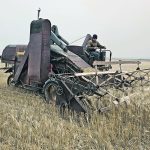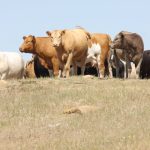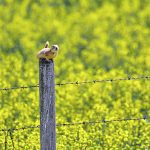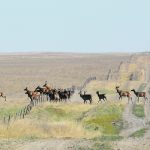Work is needed to show farmers that winter wheat can achieve quality standards of premium markets and get higher yields
With southern Alberta facing lack of precipitation issues, use of winter cereals is one of the best risk management tools a farmer has available, said Ken Cole of Farming Smarter.Stories by Alex McCuaig

Synchrotron explores why certain soils increase phosphorous loading
New research out of Sweden, with assistance from the University of Saskatchewan’s Canadian Light Source’s synchrotron, is improving the understanding of how sensitive soils contribute to excess phosphorous in water systems. The link between excess phosphorous and algae blooms is well documented. But Faruk Djodjic, associate professor at the department of aquatic sciences at the […] Read more

Alta. irrigators survived ’23 but ’24 remains dire
Irrigators were able to get through the 2023 season but not without getting bounced around in what has been a year marked by drought conditions, a quick melting mountain snowpack and little precipitation. The situation facing irrigators is best summed up by the latest bulletin from the Lethbridge Northern Irrigation District. “While it appears we […] Read more

Forgotten combine tuned up for harvest again
The 1947 Cockshutt was likely abandoned for 60 years before an auto body technician decided to repair it
The saying, “they don’t build things like they used to,” was on the mind of rural Saskatchewan resident Borden Ylioja as he set about restoring a 1947 Cockshutt combine left to rust for decades in a field, covered in trees and which had become a home for porcupines. Ylioja said he stumbled across the combine […] Read more
Alta. begins work on feed aid
Alberta isn’t waiting on the outcome of negotiations with the federal government for an AgriRecovery cost-sharing agreement and is drafting eligibility requirements for livestock producers to access assistance for feed. In an open letter to stakeholders dated Aug. 21, Alberta Agriculture Minister RJ Sigurdson reiterated the challenges faced by all livestock producers to source feed […] Read more

Yields look strong for sugar beets
Despite little precipitation across southern Alberta and low river levels, irrigation districts came through for high-value cash crops this year. The 2023 sugar beet harvest is set to match 2022 yields despite fewer acres planted, and potatoes look good heading into the end of the season. A late contract between beet farmers and the Taber-based […] Read more

Alta. irrigators watch river levels
Growers will need to decide whether to use upcoming efficiency gains to expand acres or protect their existing capacity
Late August rains in parts of southern Alberta are providing relief but river levels remain far below historical averages. That has caused irrigation districts to post early shut-off notices. Flow rates for the Oldman and Bow rivers, which converge to form the South Saskatchewan just upstream from Medicine Hat, have been stifled all season as […] Read more
Prof urges caution when using zinc phosphide
Vet says the main strychnine replacement for controlling Richardson’s ground squirrels can also poison other animals
Strychnine might be out as a pest control tool in Canada but one of the main replacement rodenticides to control Richardson’s ground squirrel populations needs special attention in its use as well, says a University of Saskatchewan veterinarian. Dr. Vanessa Cowan, assistant professor of toxicology at the Western College of Veterinary Medicine, said zinc phosphide […] Read more
Sask. farmers say elk file moves to back burner
Producers want to control feed supply damage by being allowed to hunt the animals on their own land
Elk are majestic animals that provide food for Indigenous communities and hunters, but the rising population is causing conflicts with Saskatchewan farmers. The Saskatchewan Association of Rural Municipalities passed a resolution last year calling on the government to increase hunting licences where conflicts exist between farmers and ranchers and elk. The resolution noted not all […] Read more
Strip till works for irrigated seed canola
The practice causes less erosion compared to full tillage, but allows soil to warm up faster compared to direct seeding
The wind that blows across southern Alberta provides a welcome relief to sub-zero temperatures during winter, when Chinooks can turn double-digit negative temperatures to positives. But those same winds can be a menace when it comes to protecting topsoil. Strip tilling is seen as part of the solution to prevent soil from leaving the farm […] Read more



